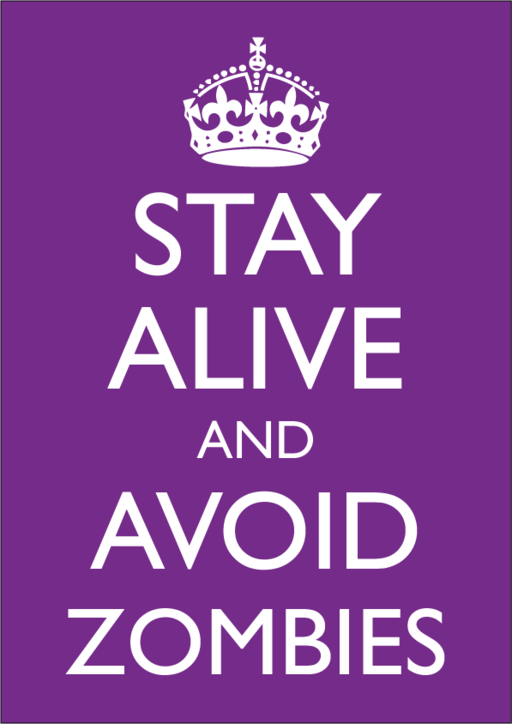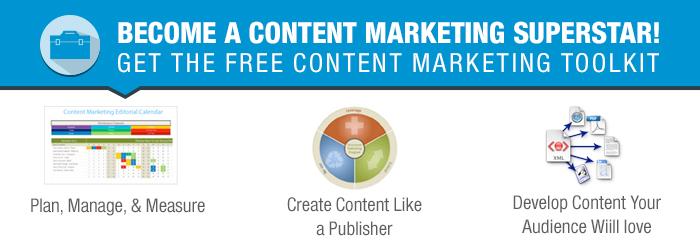PowerPoint is a handy program that can bring out the best and worst in information delivery: for every presentation that’s interesting and wow-worthy, there’s one (or maybe 10) that’s miserably unbearable. No one wants their stuff to be the latter, but it happens all the time, from the smallest business meeting to the largest keynote.
If you’re interested in keeping your audience engaged, engrossed, and enrapt (or at least awake), here are 7 PowerPoint tips that will help you grab and keep their attention.
1. Start with a question
 Challenging your audience with a question (problem statements, analogies, quotes, and anecdotes work well, too) is a tried-and-true attention-grabber that can kickstart your presentation’s momentum. It must be relevant to your audience, of course; if it’s also a bit evocative, all the better. Dedicate your first or second slide solely to the question – bold font, big letters, lots of white space – to immediately establish the tone and content of what they’re about to hear/see, and engage the mental cogs right from the get-go.
Challenging your audience with a question (problem statements, analogies, quotes, and anecdotes work well, too) is a tried-and-true attention-grabber that can kickstart your presentation’s momentum. It must be relevant to your audience, of course; if it’s also a bit evocative, all the better. Dedicate your first or second slide solely to the question – bold font, big letters, lots of white space – to immediately establish the tone and content of what they’re about to hear/see, and engage the mental cogs right from the get-go.
2. Keep it short and sweet
 As with most things, less is more. Impactful presentations stay on point: they set the scene, structure the information to support the main point, and sum it up. Keep in mind that you’ll spend approximately 3-5 minutes on each slide. So if you’re allocated 30 minutes, your entire presentation should be only 6-10 slides. So …
As with most things, less is more. Impactful presentations stay on point: they set the scene, structure the information to support the main point, and sum it up. Keep in mind that you’ll spend approximately 3-5 minutes on each slide. So if you’re allocated 30 minutes, your entire presentation should be only 6-10 slides. So …
- Limit the information on each slide. Your slide deck is a tool to enhance you, not to replace you. Do not drop your entire speech into the slide, “read” your slides, or use them as your “notes” because you’ll lose your audience. Instead, use slides to display a single image or a smattering of phrases or bullet points, and use them as points of intrigue and/or clarification for your talk.
- Write tight. The rule of thumb is a single idea per slide. Not two. One idea at a time. It’s easy to recommend and very hard to do; humans are very skilled at drifting into tangents and going off topic before we realize it. The more you can stay on subject, the more clear your points will be, and the longer you’ll keep your audience’s attention.
- Keep the main idea in front of people. Writing tight aside, you may have support slides to a key point or idea. If you do, do not assume (you know why, right?) that your audience will be keeping up with you. So be sure to keep the main idea front and center (e.g., in a pervasive header or footer across the grouped slides) to keep your audience from getting lost.
3. Use color effectively
 Colors and contrast are big players in stimulating visual appeal, and they can play significant roles in establishing and carrying the tone of your subject matter. Don’t be afraid to use them, but do practice restraint. (Unless your presentation is a study of unicorns in glitter, reign in the sparkle.) You want color to support the presentation, not detract from it. Choose your palate and usage of same thoughtfully, and don’t overlook where your presentation will be viewed. If it will be printed, test to ensure that the colors you choose look good on paper and do not, for example, bury the text or compromise the message.
Colors and contrast are big players in stimulating visual appeal, and they can play significant roles in establishing and carrying the tone of your subject matter. Don’t be afraid to use them, but do practice restraint. (Unless your presentation is a study of unicorns in glitter, reign in the sparkle.) You want color to support the presentation, not detract from it. Choose your palate and usage of same thoughtfully, and don’t overlook where your presentation will be viewed. If it will be printed, test to ensure that the colors you choose look good on paper and do not, for example, bury the text or compromise the message.
4. Simplify
 Complexity is not a good way to drive home a point. (As Telecomquotes CEO, Michael Bremmer, says, “A confused mind never buys.”) To the extent possible – and of course this depends on your audience – simplify complicated ideas so they’re accessible and straightforward. If your presentation feels pedantic and/or out-of-reach to your audience, they’ll feel alienated and disconnected, neither of which will be your goal.
Complexity is not a good way to drive home a point. (As Telecomquotes CEO, Michael Bremmer, says, “A confused mind never buys.”) To the extent possible – and of course this depends on your audience – simplify complicated ideas so they’re accessible and straightforward. If your presentation feels pedantic and/or out-of-reach to your audience, they’ll feel alienated and disconnected, neither of which will be your goal.
5. Show off your personality
 Be yourself. Sure you might be nervous (even Barbra Streisand is known to lose her cookies before a performance), but you can still be authentic. People are receptive to authenticity and forgiving of a few jitters, as long as you talk to them (not at them), and you show some character. Make it light. Tell a joke here and there. And definitely make eye contact. It will serve you well.
Be yourself. Sure you might be nervous (even Barbra Streisand is known to lose her cookies before a performance), but you can still be authentic. People are receptive to authenticity and forgiving of a few jitters, as long as you talk to them (not at them), and you show some character. Make it light. Tell a joke here and there. And definitely make eye contact. It will serve you well.
6. Break it up with something different
 Part of grabbing and keeping the attention of your audience involves breaking the flow. Find opportunities to mix things up a bit by using animation, showing a video, taking a poll, or cutting to a comic strip or joke. If it’s a live presentation, move around – across the stage or around the room – rather than standing sentinel behind a lectern.
Part of grabbing and keeping the attention of your audience involves breaking the flow. Find opportunities to mix things up a bit by using animation, showing a video, taking a poll, or cutting to a comic strip or joke. If it’s a live presentation, move around – across the stage or around the room – rather than standing sentinel behind a lectern.
7. End with a call-to-action
 If you’ve done your job right, your presentation should leave them wanting more. Give them one or more actions they can take immediately. Including links is good. Also be sure your name, title, company, website, email, phone number, and anything else pertinent is on your closing slide. Make it easy for your audience to take another step with you.
If you’ve done your job right, your presentation should leave them wanting more. Give them one or more actions they can take immediately. Including links is good. Also be sure your name, title, company, website, email, phone number, and anything else pertinent is on your closing slide. Make it easy for your audience to take another step with you.
Go Forth and Engage
According to Dr. Mark Goulston, business psychiatrist and author, your presentation should trigger a reaction from your audience, such as:
- Whoa, could you say that again?
- Wow, can you repeat that?
- Hmmmmm, I need to write that down.
- Yes! That makes total sense.
By putting these PowerPoint tips into practice, you have a better chance of spicing up your presentation, engaging and educating your audience, and winning the day … or the deal.
Interested in learning more about content marketing? Check out Act-On’s free toolkit:
“Why?” by geralt, used under Creative Commons license.
“Colour pencils” source: public domain.
“Stay alive and avoid zombies” by Mark Baker, used under Creative Commons license.

